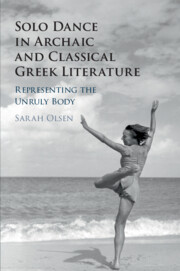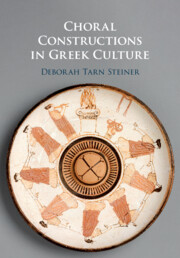Solo Dance in Archaic and Classical Greek Literature
“Ancient Greek dance” traditionally evokes images of stately choruses or lively Dionysiac revels – communal acts of performance. This is the first book to look beyond the chorus to the diverse and complex representation of solo dancers in Archaic and Classical Greek literature. It argues that dancing alone signifies transgression and vulnerability in the Greek cultural imagination, as isolation from the chorus marks the separation of the individual from a range of communal social structures. It also demonstrates that the solo dancer is a powerful figure for literary exploration and experimentation, highlighting the importance of the singular dancing body in the articulation of poetic, narrative, and generic interests across Greek literature. Taking a comparative approach and engaging with current work in dance and performance studies, this book reveals the profound literary and cultural importance of the unruly solo dancer in the ancient Greek world.
- Offers the first investigation of solo dance in Archaic and Classical Greek literature and culture
- Interrogates the relationship between dance and literature across a range of genres
- Compares ancient Greek representations of dance to performances and theories drawn from other times and places
Product details
March 2022Paperback
9781108719124
257 pages
228 × 151 × 14 mm
0.38kg
Available
Table of Contents
- Introduction: Dance, Literature, and Culture
- 1. The Fantastic Phaeacians: Virtuosity, Competition, and Dance in the Odyssey
- 2. Io's Dance: Human Mobility and Divine Authority in Aeschylus' Prometheus Bound
- 3. Dance at Work: Performance and Identity in Euripides' Ion
- 4. Dance and Dissonance: The Innovative Choreography of Aristophanes' Wasps
- 5. Staging Madwomen: Dance and Dramatic Form in Euripides and Aristophanes
- 6. Agency, Narrative, and the Dancing Girl
- 7. Dance History
- Conclusion: Reading Dance with Lucian.






